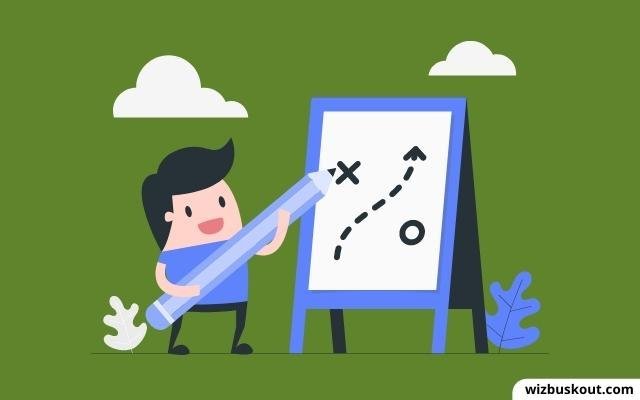Building A Story Brand by Donald Miller helps businesses bring clarity in their messaging using the power of storytelling and thus allows companies to connect more with their customers.
Who should read this book?
[amazon box=”1400201837″ template=”horizontal”]
- Small Business Owners who are struggling to attract customers.
- Website Owners who are struggling to sell their products and build an audience.
- Big Business Owners who want to make their existing brand even more powerful.
- Anybody interested in Entrepreneurship and wants to start his own business from scratch.
- Copywriters who want to write a compelling copy that attracts ideal prospects.
Get this book on Amazon: Hardcover | Paperback | Audio CD
About The Author
Donald Miller is the CEO of StoryBrand.
He is also the author of the bestseller books:
- Blue Like Jazz
- A Million Miles In A Thousand Years
Through this book, he has helped more than 3000 businesses clarify how they do marketing.
Also, he promotes his brand StoryBrand through his book. (The guy is brilliant, isn’t he?)
He also has a podcast called Building A Story Brand.
And he also has a course called Business Made Simple that costs $275/year.
If you are interested, you can learn more about him on his website here.
Building A Story Brand Summary [PDF]
Are you wasting a lot of money on marketing and still not seeing results?
Do you wonder why your customers don’t buy anything from you when they are happily shopping for products from your competitors?
Do you feel that your customers don’t relate to your message?
If your answer is YES, you need a story that your customers can resonate with.
In this book summary, you’ll learn lessons about marketing using storytelling that every business needs if it wants to stand out from the cut-throat competition in the market.
Without further ado, let’s dive right in!
Lesson #1: Make less noise and stop confusing your customers.

Often companies confuse their customers instead of directly telling them how they would help.
The author says that if you confuse your customers, they won’t make any purchases.
Plus, thousands of companies are trying their best to pull those same customers toward them. They have their own products to sell.
They have their own messages to tell.
Usually, people hate complexity.
Customers are human beings too.
The moment they notice that something will be hard, they subconsciously try to hold themselves back and eventually avoid it.
Many business owners make this mistake. If you look at websites made by inexperienced business owners, you will find that they are all over the place.
There is no single direct call to action.
They aren’t telling clearly what they do.
And if they ever do, they tell so much that the customer gets confused.
Confusion is an enemy for both business owners as well as customers.
The question is:
How to get rid of confusion and bring clarity to your message?
The best way to achieve clarity is to reduce unnecessary clutter.
But how does one differentiate clutter from what is valuable?
The thing is:
Anything that is not useful to your customer or won’t help them achieve their goals is clutter.
Yes, it may also be one of your cool products that you thought your customers would appreciate, but they didn’t because they didn’t want it in the first place.
Or you might have a cool picture on the homepage of your website that your customers don’t care about.
So how does one decide what your audience wants?
The key here is to understand your customer and his journey.
Suggested read: Never lose a customer again (Book Summary)
Lesson #2: Every customer is a hero in their own eyes.

One of the best things you can learn while building your brand is to see through your customers’ eyes.
And ask how does a customer see himself and the world?
According to the author, the customer thinks he is a hero of a movie, and anybody else is just a side character.
And this is where many companies make mistakes.
They believe they are the heroes.
The problem is: Heroes have a big ego.
They are self-centric in so many ways and don’t want somebody else to get all the attention.
If you are positioning yourself as just another hero, you will compete with your customer.
As we saw in the Avengers movie, every Hero tries to show that they are the best. And every Hero has opinions and quite many differences.
You don’t have to play the Avengers game here as a company.
You have to position yourself as a guide.
You have to help your customers become a hero.
You may indeed have what it needs to become a hero.
You may have the best product in the market. But it won’t help you much if your customers don’t believe it will help them.
So help your customers achieve what they want instead of showing how great you or your services are.
Whenever the customers browse your website, they are scanning with a lens that filters out anything that won’t help them grow in life.
Lesson #3: Target the innermost desires of your customers.

They look for solutions for their inner frustrations but feel insecure about sharing them.
For example:
Obese people feel insecure when it comes to talking about their weight. So they look for weight loss products, but what they actually want is the confidence to stand in the mirror and say, “I’m beautiful.”
If you notice carefully:
Customers usually have two types of desires: External & Internal.
The author says that most companies target external desires but often miss internal desires.
The more intimately you connect with the innermost desires of your customers, the more likely it is they will buy one of your products.
So always ask:
What does my prospect want?
This also helps in optimizing your sales page.
You can use various elements or triggers on your sales page to hit your customers’ deepest or darkest desires.
Although it sounds challenging, every human has one of these desires (as given in the book):
- Save money.
- Save time.
- Have social relationships.
- Have resources to survive.
- Feel good or generous.
- Have a meaning.
There are many other desires, but almost all of them have at least one of the above desires as their roots.
So while building any product, you have to ask:
- Will this help my customer make more money?
- Will it help my customer save time and become productive?
- Will it help my customer connect more socially or have better relationships?
- Will it help my customer find meaning in life?
- Will it help my customer survive and feel good?
When you talk about your target customer’s desires or problems, you position yourself as a guide.
It’s just like what happens in movies.
Every Hero meets a guide while facing challenges. And after that, things look achievable.
While the other times, something big happens that forces the Hero to change. But you can’t wait for a crisis. You have got a business.
So relate the same concept here.
Your customer has a problem. And you know how to do it.
So help your customers solve problems.
Be like a guide who helps the Hero achieve success and save the world by defeating villains.
If you are not talking about customers’ problems, they will find another brand that does.
Lesson #4: A great Guide is a good friend and a great teacher.

Positioning yourself as a guide doesn’t mean you don’t have to show authority.
For a hero to consider you a guide, you must first prove that you are worthy of being a guide.
Nobody trusts a stranger!
And at the same time, you have to show that you care.
You have to become a good friend and at the same time show that you know your stuff.
One of the best ways to do this is to leverage social proof.
If other people see you as an authority, your Hero will eventually trust you.
Try to get reviews from the customers you have helped before.
Also, find an influencer who knows about your expertise.
Once you do that, make sure that your customer knows about it by posting it on your website or sharing it on your Instagram story.
Remember, you have to get both of these things right:
- You have to show that you care.
- You have to know your stuff.
If any one of these is missing, you won’t become a good guide.
The author says that your customers won’t magically know about your message.
And it’s true!
Remember, there are thousands of companies trying to get their message across.
So you have to get your marketing right.
Choose a suitable medium and deliver your message to the right customer.
Lesson #5: Create a Plan and deliver it to the Hero.

The role of a guide is to show the Hero how to solve his problems.
And the best way to do that is to create a Plan.
For a customer to buy the product, it is necessary that he sees a clear roadmap and believes that he can achieve his goal.
A plan also shows that the guide is authentic.
The Hero can defeat villains and save the world by following the plan.
A plan is nothing but a strategy to tackle the problem.
And what would a company give to its customer?
Yes, the PRODUCT.
Why would a customer buy a product if it won’t solve their problem?
If you are struggling in sales, then it means that you are not communicating how you or your product is going to help the customer.
The more clearly you explain your product or plan to the customer, the more likely the customer would like to do business with you.
Lesson #6: Clarity in your message is the key to branding.

The clearer you are about your brand and your customers, the more business you will do.
Every business owner needs to ask a few critical questions like:
- Who is my ideal customer?
- What does he want to achieve?
- What makes my brand unique?
- Why should my ideal customer choose my company over the others?
- Do I have a plan to help my customers transform?
- What are the philosophical motivations of my customer?
The more specific you are, the more you will connect with your ideal customer.
Be direct in your approach.
Define who would you like to do business with.
The benefit of doing this questioning is that you save a lot of time, and at the same time, you know precisely how to satisfy your customer.
A lot of companies try to do everything.
Take the example of Amazon. It sells almost everything.
But it didn’t start like that.
Being specific doesn’t mean that you can’t scale your business.
If you have just started your business, focus on one thing first.
Once you figure out how to fulfill your customers’ needs, you can expand in other dimensions as well.
If you have a website, ask yourself:
“Do I have a button with a clear call to action (CTA)?”
If your customer doesn’t know what he has to do after he lands on your website, then you have already lost a customer.
Remember? You have to guide your customer and help him reach his destiny.
Always use buttons like “Buy Now” or “Add to Cart” that stand out and ask the customers to take action.
Note: A study shows that every 100-millisecond delay in website load time can hurt conversion rates by 7% and cost 1% in revenue. Solution? Use a fast managed cloud hosting like Cloudways. (I use this myself!)
Lesson #7: Business with a customer is like dating.

The author says that whenever a customer buys your product, it’s like having a relationship after marriage.
First, you date your customer with a free PDF or Report.
And if the customer shows interest in that, you ask him to marry you (purchase a product from your website).
The thing is:
People don’t commit instantly as they fear getting scammed.
Would you jump into a relationship without thinking about it? Never.
A mindful person would put a lot of thought into choosing his partner.
Usually, it’s the fear that holds customers back from buying from your website.
That’s why stories are essential.
By telling the success stories of your previous customers, you can persuade your new prospects to buy from you.
The more people talk about your brand, the more stories you have, and the stronger your branding gets.
What does it mean by “Building a Story Brand”?
A Story Brand means that you are becoming part of your customers’ life.
You are entering the story of your customer as a guide. And helping him solve a problem or reach his destination.
Brands use stories almost everywhere.
Why? It’s because the moment you tell a story, it attracts attention.
The most successful brands are best at storytelling.
Storytelling is one of the most powerful ways to breathe life into your brand and is also one of the main components of a solid content marketing approach.”
~ David Campbell
But often, especially new companies, think that customers are stupid.
They create fake stories.
Imagine going to a distant place to enjoy your picnic, but your guide misleads you and gives you the wrong directions.
Would you be happy with that guide? Hell no.
The stories must be authentic.
You can be creative in the way you tell the story. But don’t fake it.
The customers love to do business with the companies they can trust.
And trust helps in building a brand.
While building a story brand, keep in mind that your story must relate to the customer.
Your brand must be 100% about the customer.
For example, Airbnb doesn’t keep bragging about how many countries they cover. Instead, they ask their customers to share their experiences of the places they visited.
They make their stories about their customers. And not about how excellent their network is worldwide.
Building A Story Brand Review
[amazon box=”1400201837″ template=”horizontal”]
I highly recommend this book to anyone interested in building successful businesses.
As I do a lot of courses on Udemy and LinkedIn Learning, I already know a lot of things about Storytelling in Marketing.
But I enjoyed how the author explained the entire concept based on psychology.
We all see ourselves as heroes. And love to hear stories.
That’s why this concept works with businesses and allows them to create a bond with customers, which is essential for any business to achieve exponential growth.
Talking about this book, the paper, and the print quality was excellent.
Talking about the negatives, the author could have saved some paper if he had explained the concept in a few pages. The author repeated the same ideas repeatedly, which was not necessary.
Now the big question:
Is this book worth your time?
Answer:
Yes, if you are a businessman or entrepreneur.
No, if you hate business.
Book Rating (Personal): 7/10
Get this book on Amazon: Hardcover | Paperback | Audio CD
Now It’s Your Turn!
I hope you enjoyed reading this book summary.
Got any thoughts? Leave a comment.
And don’t forget to join my email newsletter, where I share updates related to new book summaries.
Want to consume more insightful, power-packed content like this in the future?
Subscribe to the weekly email newsletter.
Subscribe to YouTube channel for animated video books.
Try Amazon’s Audible 30-days Free Trial and Get 2 Audiobooks for free.

